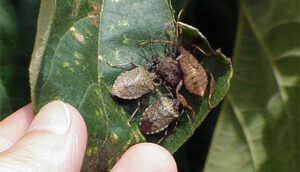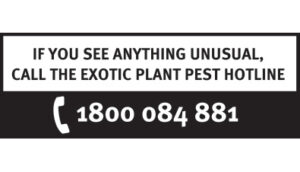Read the latest information on
Foot-and-mouth disease

Early detection and reporting is crucial to prevent exotic pests like brown marmorated stinkbug out of Australia. Image courtesy of Gary Bernon, USDA APHIS, Bugwood.org
Plant pests and diseases can have a serious impact on your business, industry and community. By reporting anything unusual, you help protect your bottom line but also help reduce the likelihood that new pests are here to stay.
Growers and their employees are at the forefront of managing pests and diseases and will generally be the first to identify new and unusual pest or disease symptoms. Early detection and reporting of an exotic pest and diseases provides the best opportunity for containment and eradication.
It’s always better to report something, even if it turns out to be a false alarm, than to not report at all.
How to report
You can report any suspicious symptoms to the Exotic Plant Pest Hotline on 1800 084 881. Before calling, take photos and collect as much information as you can. The more information you can gather, the better. This includes:
Tips for taking photos
 After taking photos and notes, call the Emergency Plant Pest Hotline on 1800 084 881 to report what you’ve found.
After taking photos and notes, call the Emergency Plant Pest Hotline on 1800 084 881 to report what you’ve found.
If you’re in Western Australia, you can use the MyPestGuide™ Reporter app to send images of pests and diseases for diagnosis.
If you find yourself wanting to know more, Plant Health Australia also offers a Pest Reporting and Responses course for growers. The course focuses on a grower’s role in reporting and responses, how to report and what may happen after you do. The course also includes the responsibilities of governments and industries in the early part of a pest incursion. The course free and take around 15 minutes to complete. Once you’ve registered, you’re good to go.